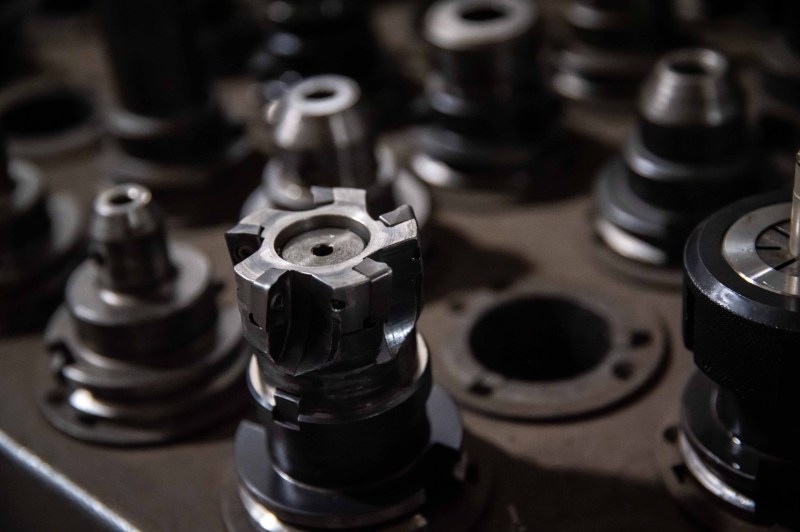March 15, 2024
Composite materials have become increasingly important in the aerospace industry due to their high strength-to-weight ratio and ability to improve aircraft performance. By reducing the overall weight of the aircraft, composites allow for increased fuel efficiency, longer range, and higher payloads. Today we’re focusing on thermoplastic composites, a type of composite widely used in aerospace manufacturing, and the multiple materials used in their construction.
Unmatched value for critical needs: Connect with our team today to discuss your next aerospace manufacturing project.

Thermoplastic composites are a type of composite material consisting of two main components—a continuous fiber reinforcement, usually made of carbon or glass fibers, and a matrix (or binder) material made of thermoplastic. The combination allows the advantageous properties of both to be exploited. Unlike thermoset composites, which undergo an irreversible chemical reaction during curing, thermoplastic composites can be reheated and reformed. This characteristic means there is additional flexibility in manufacturing. Parts can be formed from raw layups, or reformed from previously consolidated flat panels—as this is typically done on different machinery, this increases the capacity to make parts.
Thermoplastic composites offer several advantages over their thermoset counterparts, including improved toughness, impact resistance, and processing flexibility. They are commonly used in aircraft applications, including for various interior components, as well as structural elements such as fuselage sections and much more.
The performance of a thermoplastic composite depends on the selection of reinforcement fibers and matrix materials. This offers great versatility and the flexibility to pair specific fibers and matrix materials for different characteristics—ideally traits best suited to your specific application. Common reinforcement fibers used in aerospace applications include:
There are even more variables when it comes to the matrix materials used in aerospace thermoplastic composites. For example, at Re:Build Cutting Dynamics we have extensive experience with the following thermoplastic materials:
The choice of matrix material depends on the specific requirements of the application, such as operating temperatures, chemical exposure, and desired mechanical properties. Aerospace manufacturers carefully evaluate these materials to optimize the performance and durability of their composite components.
The combination of reinforcement fibers and thermoplastics matrices results in composite materials with exceptional mechanical, thermal, and chemical properties, making them well-suited for aerospace applications.
High strength and stiffness: Enabling lightweight and durable structures.
Excellent fatigue resistance: Crucial to withstand repeated stress cycles during flight.
Heat resistance: Allows for operation in high-temperature environments.
Low thermal expansion: Maintains dimensional stability over a wide temperature range.
This allows the aircraft composite to withstand various chemicals and fluids encountered in aerospace environments.
This is the ability of the composite material to meet stringent fire safety standards for aircraft components.
As the aerospace industry continues to pursue weight reduction and performance optimization, the development of advanced thermoplastic composite materials will play a crucial role. Ongoing research focuses on improving material properties, streamlining manufacturing processes, and exploring new material combinations to meet the ever-increasing demands of modern aircraft design.
Re:Build Cutting Dynamics is proud to be a leading manufacturer of a wide range of vital components made with aircraft composites. As an experienced manufacturer of various thermoplastic carbon fiber products and accessories, we have the knowledge and experience to find, fabricate and/or assemble the optimal solution for your aerospace project. As proof of our technical acumen, we’re proud to be both AS9100 certified and ISO 9001:2015 certified, and ITAR compliant.
Using a variety of carbon and glass fiber materials, we create a large selection of aircraft structure and interior composites, which include:
Now a part of Re:Build Manufacturing, we handle everything from tape consolidation through trimming using our in-house 5-axis robots. Our digital documentation makes it easy to trace your order for up-to-the minute updates on status and precise historical records. We develop aircraft composites through a patented process which allows for rapid manufacturing of everything from continuous flat panels to complex shapes in 50-foot lengths. Comprehensive in-house resources enable us to perform component assembly, custom sub-assemblies, kitting, and 4PL sources. And this is all just a small slice of our wide range of capabilities.
When you need to navigate the many potential options with aircraft composites, trust Re:Build Cutting Dynamics for clarity. Connect with our team today to learn more.
Our team at Re:Build Cutting Dynamics wants to ensure that all your questions regarding aircraft composites have been answered. With that in mind, feel free to contact us today with any questions you may have, as we look forward to assisting you.